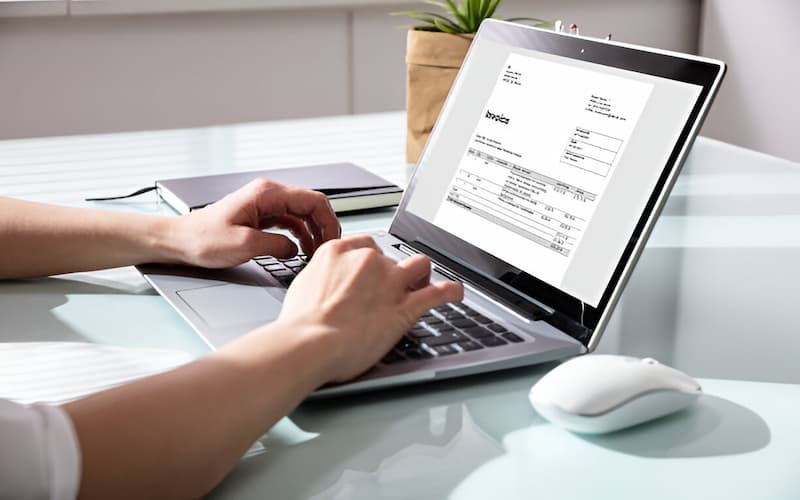
What Makes an E-Invoicing Software Truly ‘Best’? Features to Look for in 2025
In the fast-paced environment where the world is shifting to paperless operations and real-time digital compliance, e-invoicing is no longer a trend, but a requirement. The world is seeing governments, such as that of Saudi Arabia, India, and the EU, requiring structured digital invoicing formats. This transition has led companies to seek solutions beyond simple digitalization of invoices and are aimed at making them compliant, efficient, and secure.
There are dozens of solutions on the market, but what is the one that could be deemed as the best e-invoicing software in your business in 2025? Although it might be different based on your industry, size, and objectives, there are fundamental characteristics that make excellence in this area. This blog discusses the capabilities that make the difference between the mediocre tools and the best-performing e-invoicing tools.
1. Regulatory Compliance and Local Tax Integration
The most significant and first standard of the best e-invoicing software is to be compliant with the local tax authorities. It be ZATCA in Saudi Arabia, GSTN in India, or Peppol in the EU businesses require software that conforms to national systems.
The software should:
- Make it support compulsory invoice formats (e.g., XML, UBL, etc.).
- Enable real time clearance or reporting to tax portals
- Automatically update regulations regarding any change in regulations
A platform that remains ahead of local compliance will save your business the cost of penalties and will be audit ready at all times.
2. Real-time Data validation and error checks.
Invoices with manual errors may be rejected, take a long time to be paid, or even cause non-compliance. The most productive e-invoicing programs in 2025 will have automated validation to detect errors prior to sending.
search for systems that:
- Mark any missing fields or wrong tax rates
- Verify customer/ vendor IDs
- Duplicate invoice numbers Check
- Make sure that values are consistent with the set of rules (e.g., VAT calculations
These characteristics do not only enhance accuracy but also generate trust among customers and partners
3. Accessibility and Scalability in the Clouds
Businesses today require flexibility. Your team can work in the office or remotely, but cloud-based e-invoicing software will provide access to invoice data anytime, anywhere.
Benefits of cloud solution are:
- Automatic back up and update
- Scalability of expanding businesses
- On the go approvals through mobile accessibility
- Instant inter-departmental cooperation
Cloud solutions also do not require in-house server or difficult IT infrastructure, which makes them suitable to start-ups or small and medium enterprises.
4. Accounting and ERP Systems Integration
The most effective e-invoicing software does not operate in a vacuum, it easily connects with your ERP, CRM and accounting systems to remove the redundancy of data entry and simplify the financial processes.
Find solutions that are plug and play with:
- SAP
- Oracle
- QuickBooks
- Microsoft Dynamics
- Zoho Books
- Odoo
These integrations allow end-to-end automation of the process of invoice creation to payment tracking, which saves time and limits human error.
5. Data Protection and Security
Security is not negotiable particularly when it is sensitive financial and customer information. The most effective e-invoicing software platforms of 2025 are enterprise grade encrypted, have role-based access controls and audit trails.
Check for:
- ISM 27001 or GDPR compliance
- Two-factor authentication (2FA)
- SSL/TLS encryption of data transmission
- Disaster recovery and backup systems
Strong security will instill confidence in your clients and keep your organization safe against fraud or information leakage.
6. Analytics and Reporting Ability
In addition to generating and sending invoices, your software must also offer the information about the financial performance and customer behavior.
Advanced e-invoicing tools provide dashboards and reports of:
- Aged receivables
- Payment trends
- Monitoring of tax liability
- Success rates of invoices
This kind of report enables the decision-makers to streamline cash flow, pursue outstanding invoices and make better revenue projections.
7. Workflow Automation
The finest e-invoicing software is characterized by automation. Rather than human intervention at each stage, seek such characteristics as:
- Recurring automatized invoicing
- Due payment reminders through email
- Auto-approval processes on big transactions
- Payment gateway integration
These automations will minimize the manual work and will streamline the invoicing process, including its creation and settlement.
Final Thoughts
By 2025, the most comprehensive e-invoicing software is not necessarily the one that has all the features, but the one that suits your business compliance requirements, your existing systems and the one that grows with your business. Whether it be real-time tax integration, automation and analytics, the best platforms will enable your organization to work faster, smarter and with full confidence.
In choosing software vendors, look at those who have knowledge of the regulations of your region and those who provide a high level of support and have a clear path of innovation.
E-invoicing is not an option anymore, it is a base. The correct decision you make today will prepare your business to be efficient, transparent, and successful tomorrow.
Post a comment